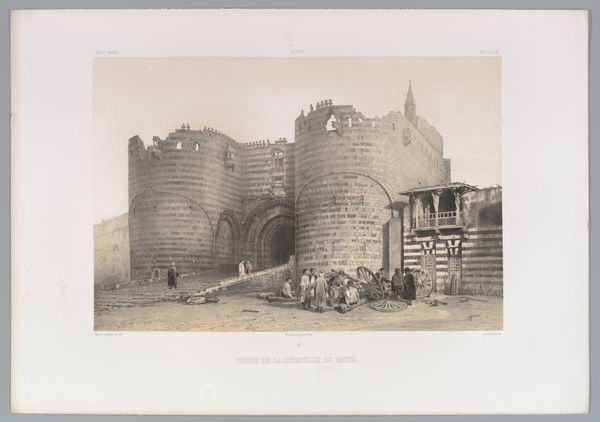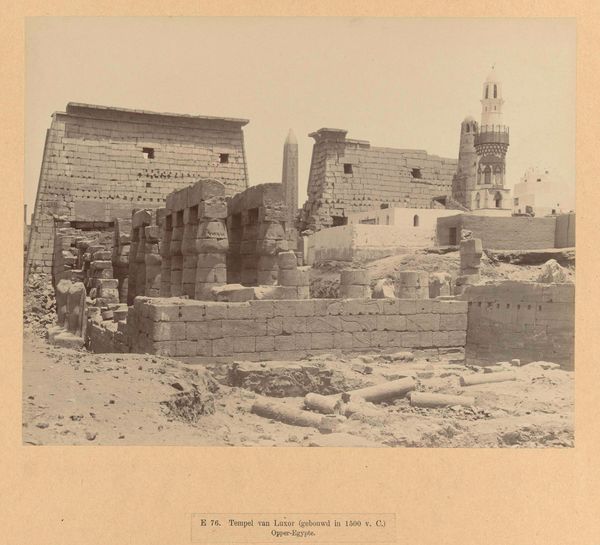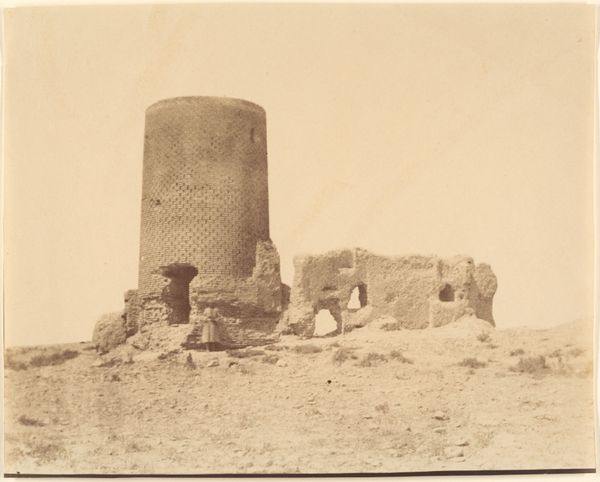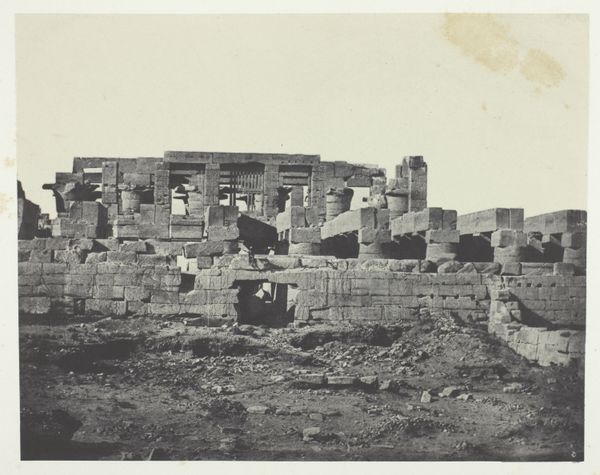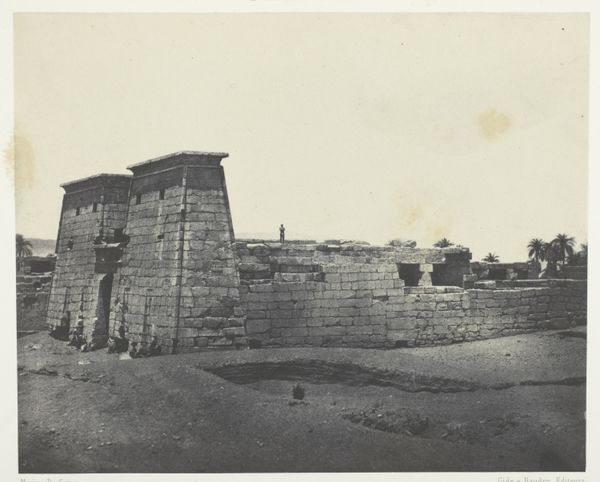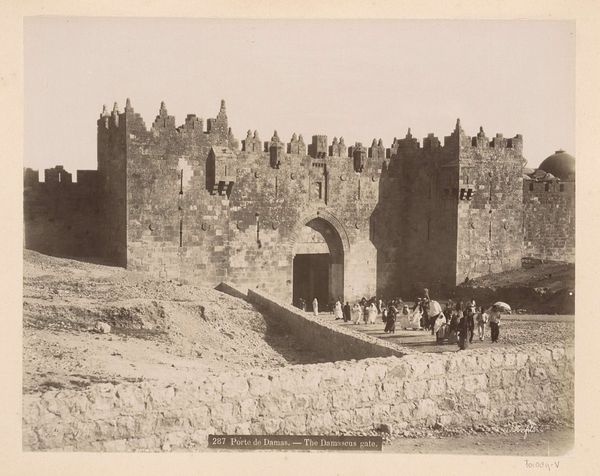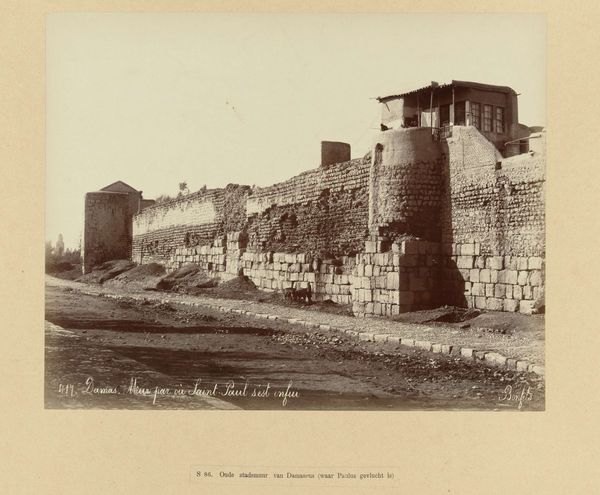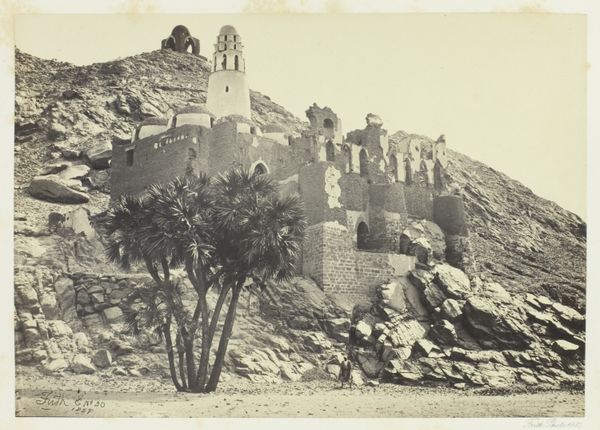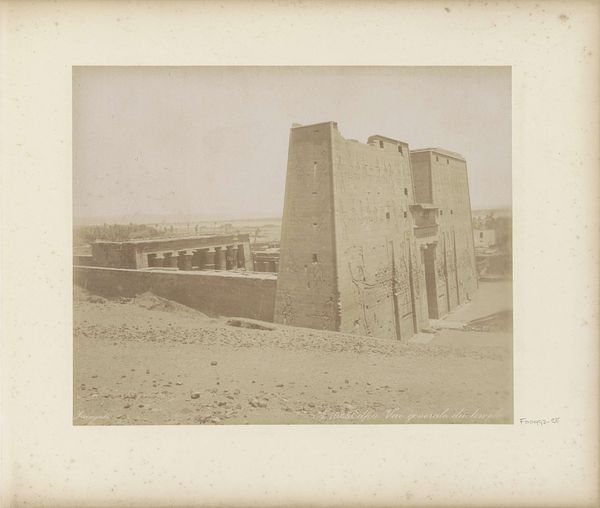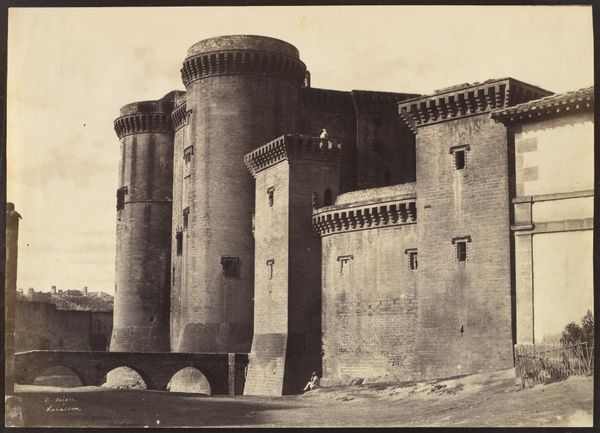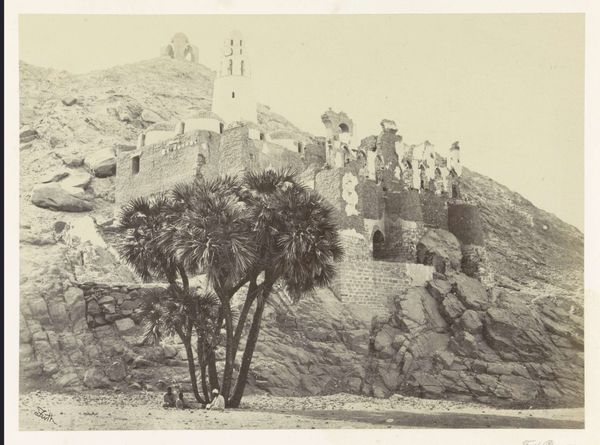
print, daguerreotype, photography, albumen-print
# print
#
landscape
#
daguerreotype
#
archive photography
#
photography
#
historical photography
#
ancient-mediterranean
#
orientalism
#
cityscape
#
albumen-print
Dimensions: height 160 mm, width 229 mm
Copyright: Rijks Museum: Open Domain
This photograph of Bab al-Azab, the gate to the Citadel of Cairo, was taken by Francis Frith, an English photographer, in the 19th century using the wet collodion process. The image’s sepia tones and soft focus are direct results of this technique, which required Frith to coat a glass plate with chemicals, expose it in the camera while still wet, and then develop it immediately. This complex and time-sensitive process was a far cry from modern photography; each print was a labor of love. Frith's choice of subject matter, the gate itself, emphasizes the weight and solidity of the citadel's architecture. The visible wear and tear on the stone speak to the passage of time, while the encampment in front hints at the contemporary social dynamics of the site. Consider the effort required to produce this image, and to transport these photographic processes across continents. Ultimately, this speaks to the complex interplay of labor, technology, and commerce in the colonial era. Through understanding the making, we gain a richer appreciation of the image's historical and cultural context.
Comments
No comments
Be the first to comment and join the conversation on the ultimate creative platform.
